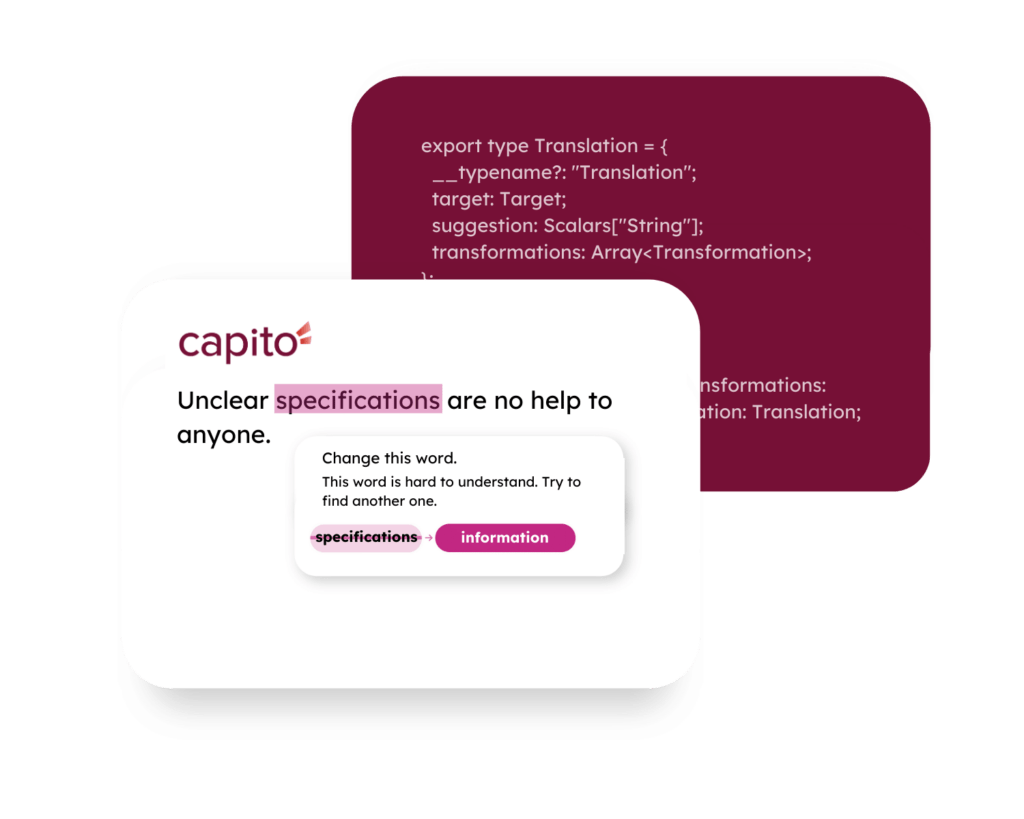capito.ai
On-premises solutions for your needs
With an on-premises installation you can host capito digital on your own servers.

capito.ai
With an on-premises installation you can host capito digital on your own servers.

All capito.ai services are available as on-premises solutions. You have full access to capito digital.
Our CI/CD process is designed to make on-premises installation and software updates as easy as possible.
With an on-premises installation, you can choose where the software is hosted. You have full control over your data.
Simplification API
capito.ai simplifies texts fully automatically for 3 easy-to-understand language levels.
Analysis API
capito.ai checks texts for comprehensibility and shows which simplifications can be made.
Suggestions API
For difficult words, capito.ai suggests easy-to-understand alternatives.
Lexicon API
Easily understandable explanations of terms can be requested directly.
Any questions?
If you would like more information and answers to frequently asked questions about our on-premises solutions, please click here.
Don’t hesitate to reach out to us!
capito is Italian and means “I get it.”
In the future, everyone should be able to say: “I have understood”.
+ 43 316 393 449 office@capito.eu
Headquarters
Heinrichstraße 145
8010 Graz
Austria
U.S. division
1247 Wisconsin Avenue NW Suite 201
Washington, DC 20007
USA
capito is part of the atempo group